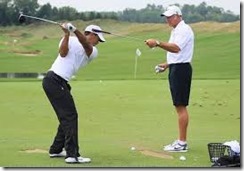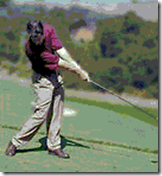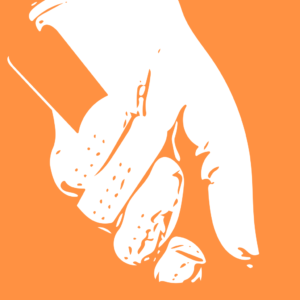Hitting past your chin–the holy grail of golf
It was during an informal duel at my golf club that I pulled off one of the most challenging approach shots (uphill lie, uphill invisible green) – and landed it within a few feet of the pin. A simple swing thought (given to me by one of the lead instructors at the club) came to my rescue.
The tip focused on the GAP between my right shoulder and right cheek. Try and visualize the gap between these. As you swing back, the idea is to MAINTAIN this gap – as much as possible. Maintaining this gap automatically keeps your head steady !
More on The Backswing GAP – Visualize a steady right ear on the backswing
If you are unable to visualize this gap, try and CREATE some space between your turning shoulder and your right ear. This separation (between the right ear and the right shoulder) should feel like you are pulling a bow string taut. Taut is a different feeling than stiff – and taut is what you are after in your backswing. Another indicator of this feeling is that you should a weight shift (from your left foot to your right) – but without any HEAD shift taking place. That is – your HEAD stays steady as your BODY shifts its weight . This feeling goes hand-in-hand with the ‘pulling a bowstring’ taut feeling. These are both indicators that you created the gap successfully.
The Downswing – HIT past your chin
If you executed the backswing (gap) correctly, your right cheek (or ear) should not have moved. A similar visual can help execute a perfect downswing. Instead of the ear, visualize your CHIN – and imagine hitting PAST your chin. This thought is not just a ‘tip’ – it is the centerpiece of every professional’s swing. They all do it – whether or not they realize they are doing it. Sir Henry Cotton (eminent British golfer in the 1930s and 40s) – promoted this concept and made it the centerpiece of his training.
Seems easy – What can go wrong ?
Balance! All this sounds easy to execute (just create a gap on the backswing and hit past your chin on the downswing). In reality, it IS actually easy to visualize – and with a little practice, perfect. These two thoughts constitute the simplest and most effective of all swing thoughts.
However, there is one thing that can derail this simple swing. Balance – resulting from lack of lower body strength.
Keeping a steady head position implies keeping several other things steady. Most notably , STEADY HIPS (your hips should not SWAY). In addition, a steady head also implies sure footing (i.e. your feet stay planted as you turn – no slippage). If you have either of these problem points (and not to worry – even Tiger suffered from hip sway early on in his career) – then you need to work on your balance.
Two Indispensible Golf Exercises (for balance)
- Squats (described in a previous post)
- Planks (for core strength). Goes without saying – the core is the most crucial set of muscles for overall balance.
Summary
Even to this day, this swing thought (of creating a gap on the backswing) rescues me during clutch shots. One cannot overemphasize the simplicity and the effectiveness of hitting past the chin. Creating a separation on your backswing is also easy to visualize (certainly easier than visualizing where your clubhead is). Hitting past your chin – is a swing thought as old as the hills. It is tried, tested – and an integral part of every professional golfer’s downswing. Is it the ‘holy grail’ of the golf swing ? Perhaps not – but it DOES produce a simple swing that is repeatable under pressure.
An indication that you are executing ALL of the above correctly is if you can feel your weight shifting – without any HEAD shift. If you try the swing thoughts above, you will find your weight shifting automatically (from left to right) – without you having to force it (golfers who INTENTIONALLY end up trying to shift weight, end up unhappy golfers…).
Questions ? Comments ?




Excellent advice. Simple and effective.
Swinging the handle with the arms(Merrins +Jacobs et.al) allows the big body parts to keep out of it and avoid swaying , headlifting.
Burn modern instruction books.
More articles like this.
love this comment
Thanks Paul, glad you concur. If you want to stay abreast of such real-world lessons, please checkout my facebook page :
https://www.facebook.com/golftipsforamateurs
Thanks
Thanks for the thread on Percy Boomer’s book.
No praise for it, in any context, is high enough